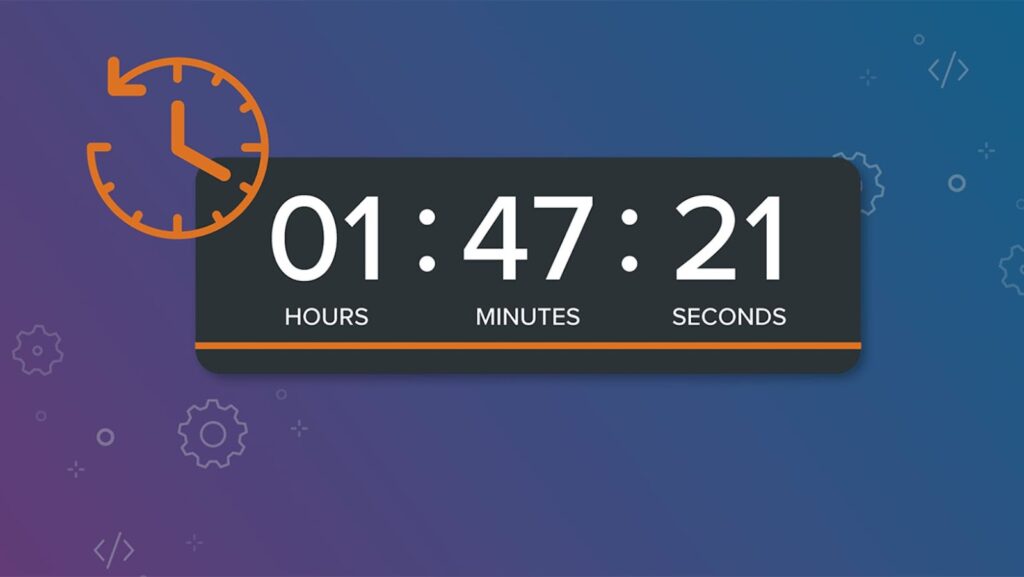Countdown timers have become an integral element of modern marketing strategies. Companies use them to engage audiences and increase conversions. This relatively simple but extremely effective tool relies on fundamental principles of human psychology, such as a sense of urgency, scarcity, and fear of missing out.
At first glance, a countdown timer looks like an ordinary countdown to a specific date or event. However, this phenomenon hides deep psychological mechanisms that motivate people to take targeted actions within a limited time window. A correctly implemented and placed timer can catalyze decision-making, forcing consumers to think and act faster.
The Principle of Urgency and Scarcity
Two powerful psychological factors underlie the effectiveness of the countdown widget for websites — a sense of urgency and scarcity or limited resources. When a person sees that an offer or opportunity is time-limited, their subconscious reaction is to act quickly to avoid missing out on the benefits.
The countdown timer visualizes and highlights such a limited window of opportunity. Another reinforcing psychological effect is reactive resistance — the natural human tendency to cling to freedom of choice and resist attempts to limit it. By restricting access to an offer over time, marketers encourage consumers to make a choice proactively, counteracting this reactive resistance.
Fear of Missing Out (FOMO)
One of the key psychological factors underlying the effectiveness of timers is the phenomenon of fear of missing out. This is a common social psychological condition in which people feel anxious or worried about the real or imagined prospect of missing out on something enjoyable, valuable, or interesting.
Marketers have long used FOMO to create artificial value and increase demand. Timers amplify the FOMO effect by creating a real-time limit for a particular benefit. Seeing that time is running out, potential customers fear missing out on an offer, which pushes them to take the targeted action of buying or registering.
In psychology, this effect is explained by Kahneman and Tversky’s prospect theory and the concept of bounded rationality. People tend to exaggerate the negative consequences of missed opportunities, which affects their decisions under time pressure and uncertainty. Marketers fuel this fear with flashy calls to action, testimonials from satisfied customers, and other FOMO triggers.
The Effect of Social Proof
Another powerful psychological principle used in conjunction with countdown timers is social proof. This phenomenon describes people’s tendency to mimic others’ actions and choices, especially when they are under conditions of uncertainty.
In marketing, social proof is often manifested by showing the number of people who have already taken a targeted action (e.g., “1,284 units have already been purchased”). Combining such messages with a timer creates the perception that many other consumers are promptly taking advantage of the offer while it is available. This further fuels FOMO and the individual’s desire to join the “social norm”.
In addition, timers can be supported by testimonials or actual customer comments, visually demonstrating that other people have had time to take advantage of the offer before the deadline. Social proof reduces perceived risk and distrust by making a person think, “If so many people have already done it, I should hurry up, too.”
Principles of Attention and Focus
In addition to engaging deep psychological triggers, countdown timers have the significant function of attracting and holding the user’s visual attention.

A moving, changing image automatically draws the eye by focusing a person’s cognitive resources on a specific interface area. Marketers use the following principles:
- The principle of contrast and emphasis is used. Different colors, animation, periodic blinking, or other effects are used to maximize the timer’s visibility.
- Principle of emphasis. Attention can be further emphasized by icons, arrows, bold typeface, and concise catchphrases next to the timer.
- The effect of novelty and movement. The human eye involuntarily focuses on moving and changing elements in the field of view.
- Rule of thirds. Timers are often placed according to the rule of thirds to optimize the gaze path according to the principles of visual hierarchy.
By combining the principles of contrast, emphasis, novelty, motion, and visual hierarchy, they automatically draw the eye to critical areas of the interface. This increases the likelihood of reading messages and taking targeted actions.
Personalization and Customization
Modern marketing strategies involve personalization and an individual approach to each consumer. Countdown timers can be integrated into this paradigm in several ways:
- Personalized triggers. Displaying a timer only to specific audience segments based on their preferences, behaviors, or previous actions.
- Dynamic time slots. Instead of a single static timer, you can use machine learning algorithms to predict the optimal duration for each user.
- Contextual adaptation. Timers can dynamically adjust to the context and goals of an individual visitor based on their behavioral scenario.
- Personalized messaging. Texts and calls to action next to the timer can be personalized based on a particular user’s interests, preferences, and interaction history.
Personalization allows you to make the impact of timers as relevant and valuable as possible for specific audience segments. Predicting the ideal duration and optimal wording based on big data significantly increases the likelihood of conversions and user satisfaction.
Conclusion
Countdown timers are powerful psychological tools for engaging audiences and driving sales. By drawing on the underlying principles of human behavior, they can increase conversions and reinforce an offer’s perceived value.
However, their implementation requires a careful approach, context analysis, continuous optimization, and adherence to UX design best practices. Only properly integrated timers can maximize their effectiveness without compromising the user experience. Personalization and consideration of each customer’s characteristics are a natural next step in developing this marketing strategy.

